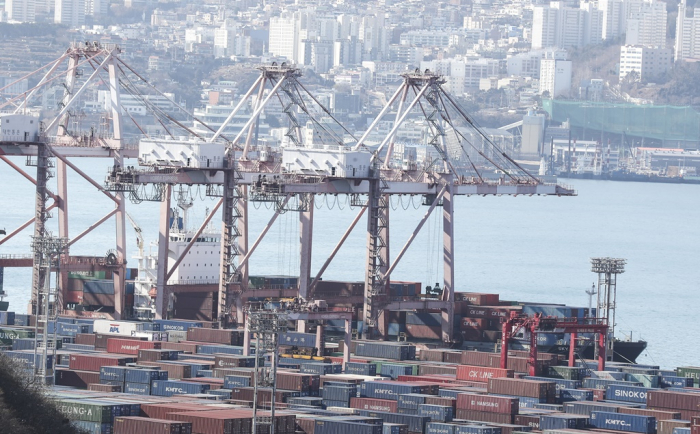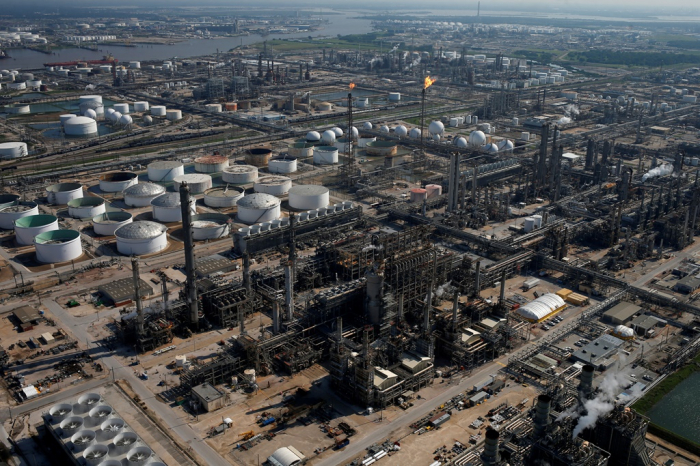Economy
Korea to see second month of trade deficit
Asia’s fourth-largest economy set to post first consecutive monthly trade deficit since 2008-09 global financial crisis
By Jan 24, 2022 (Gmt+09:00)
3
Min read
Most Read
LG Chem to sell water filter business to Glenwood PE for $692 million


Kyobo Life poised to buy Japan’s SBI Group-owned savings bank


KT&G eyes overseas M&A after rejecting activist fund's offer


StockX in merger talks with Naver’s online reseller Kream


Mirae Asset to be named Korea Post’s core real estate fund operator



South Korea is slated to see a trade deficit for a second straight month in January for the first time since the 2008-09 global financial crisis on higher energy prices, undermining one of the pillars of Asia’s fourth-largest economy.
The country logged a shortfall of $5.6 billion in the first 20 days of January, according to the Korea Customs Service. The nation posted a $590 million loss in December 2021. In January last year, it reported a $4 billion surplus.
“The trade deficit is unlikely to turn to a surplus, although the deficit is expected to decrease as the month's end approaches,” said a government source, referring to this month's balance.
It was the first time for South Korea to report a trade deficit two months in a row since 2008 when the country posted a loss in September for the fourth straight month, according to the government data.
The latest deficit was mainly due to higher energy prices. Imports from Jan.1 to Jan. 20 jumped 38.4% to $40.1 billion as crude imports surged 96%. Gas and petroleum product procurements surged 228.7% and 85.7%, respectively, during the period. On the other hand, exports rose 22% to $34.4 billion.
HIGHER ENERGY PRICES, CHINA SLOWDOWN
The government attributed the deficit to the rising demand for energy resources in the winter, seeing the loss as temporary. Analysts, however, did not rule out the possibility of further deterioration in the trade balance, given the sustained supply shortage of the raw materials and China’s slowing economy, South Korea’s top export market.
“If crude prices continue to rise with a forecast of topping $100 a barrel, that could slow global demand and export growth,” said Cheong Inkyo, an international trade professor at Inha University. “Rising energy import costs may deteriorate the trade balance further.”

South Korean authorities already expected this year’s trade surplus to shrink as they predicted a lower current account surplus in 2022.
The Bank of Korea forecasts an $81 billion current account surplus for this year, lower than the $84.2 billion surplus in the first 11 months of 2021. The finance ministry expects $80 billion, while the Korea Development Institute sees $65.1 billion.
STRUCTURAL CHANGE
South Korea’s annual trade surplus hit a record high of $95.2 billion in 2017 but declined since then. Last year, the surplus was a mere $29.4 billion even as the country’s exports touched an all-time high of $644.5 billion.
The country is undergoing a structural change that makes it difficult to increase the trade surplus in line with higher exports as it imports more intermediate goods for exports.
Intermediate goods imports account for 49.7% of total purchases, according to the Korea Importers Association’s recent analysis. The more products manufacturers export, the more intermediate goods they import. A rise in intermediate goods prices due to any supply disruption usually results in higher costs.
FIRST ANNUAL TRADE DEFICIT SINCE 2008?
Energy prices have been rising since early 2021. The benchmark Brent on Jan. 19 topped $89 a barrel to hit the highest since 2014. Natural gas and other energy resources are expected to surge further if Russia invades Ukraine, raising South Korea’s energy import bills to hurt its trade balance.

China’s economy is also slowing. The world’s second-largest economy grew 4% in the fourth quarter of last year. That stoked some fears that its economic growth may miss even 5% this year although an adviser to the government’s cabinet said the country will be able to achieve 5.5% in 2022.
South Korea’s exports to its neighbor accounted for 25.3% of its total overseas sales value last year. But that fell to 18.8% in the first 20 days of January, far below the 28% of exports to the US where the economy has been recovering.
As the bearish factors materialize, South Korea may see a trade deficit in 2022, for the first time since 2008, some feared. That would force the country to suffer twin deficits – fiscal and current account shortfalls – since the government is expected to report a budget deficit in 2022, for the fourth straight year of loss.
Write to Kyung-Mok Noh and Ik-Hwan Kim at autonomy@hankyung.com
Jongwoo Cheon edited this article.
More to Read
-
 EconomyKorea 2021 exports hit record on strong sales of key products
EconomyKorea 2021 exports hit record on strong sales of key productsJan 02, 2022 (Gmt+09:00)
2 Min read
Comment 0
LOG IN


